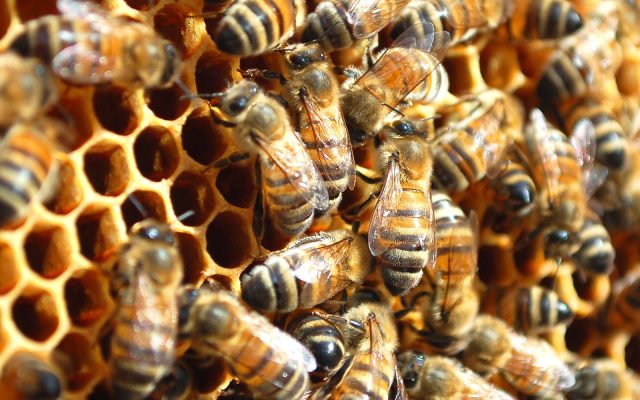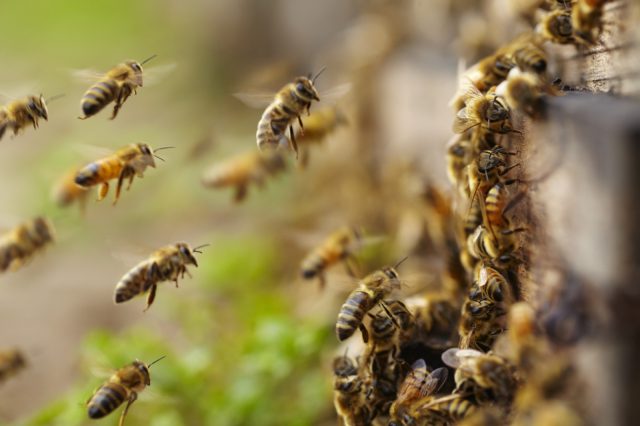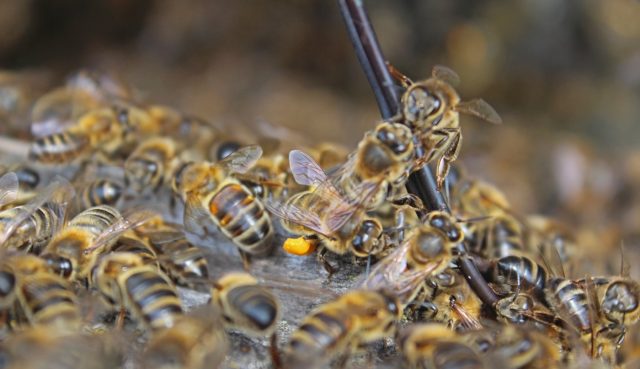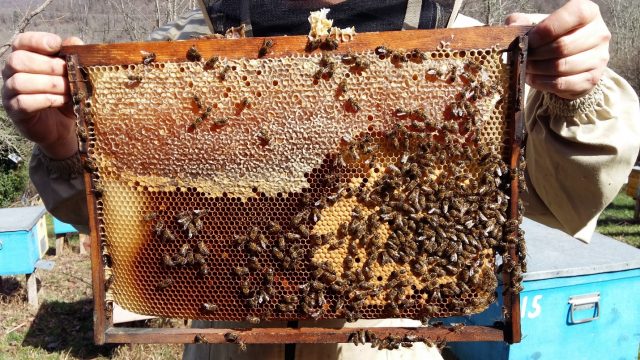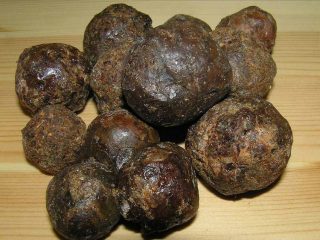Content
Combining bee colonies in autumn is a familiar and inevitable procedure in every apiary. With any configuration, by the end of summer, there will be one or several weak colonies that will not overwinter. It is recommended to unite bee colonies for better productivity during honey harvest.
Why is the unification of bee families necessary?
Observation of the state of the apiary is carried out from spring to the onset of autumn. If the colony has overwintered, there are at least 6 frames left in the colony and the presence of brood is of medium strength. With the reproductive queen, the swarm will get stronger, the composition will increase, and a strong bee colony will leave in winter.
Weak bee colonies by the beginning of autumn will not be able to grow a sufficient number of young individuals for successful wintering. If the bees stop taking bribes in favor of heating the babies, the queen will stop laying. The gatherers will switch to honey harvesting, at the end of autumn the stock of the product will be in excess, and the number will not be enough to maintain the required temperature in the nest in winter. The bee colony does not overwinter.
The main task, due to which it is necessary to unite the bee colonies in the fall, is to increase the number. To strengthen the nest, it is necessary to combine several weak bee colonies into one for greater productivity during honey collection. An apiary is only profitable when it brings income to the beekeeper.
It is mandatory to unite a queenless bee colony with a full-fledged colony in the fall. If queen cells are not laid on the brood or the young queen came out too late and did not have time to fertilize before the beginning of September, honey collection stops, such a bee colony is doomed without measures taken in winter.
When beekeepers make bee colony unification
Bee colonies are connected depending on the reason. If the goal is to get a colony of bees for a good bribe, the union is carried out before the main honey harvest. For a safe wintering, beekeepers with experience in beekeeping recommend uniting bee colonies in September. After analyzing the state of the colony, the beekeeper determines the feasibility of the event. Promising bee colonies meet the following requirements:
- no signs of infection;
- there is a fertilized uterus with good egg-laying ability;
- the volume of the sealed honey is correct;
- numerical strength in abundance.
If one or more problems are found during examination, bee colonies need to be corrected. Without the measures taken, the bee colony will die in cold weather. If he can overwinter, in the spring he will be incapacitated.
Methods for joining bee families
Each bee colony has a certain smell, which collectors and receivers can easily identify. The settling of strangers with an unfamiliar smell is perceived with aggression, especially if the bee colony will be with its reproductive queen. There are several methods for combining bee colonies:
- unification of a weak bee colony with a strong one;
- reinforcement of an average bee colony with a colony without a queen;
- the creation of a honey plant colony based on the spring cut;
- combining the caught swarm and the old bee colony;
- settling two clearly defective nests in a new hive;
- unification of swarms.
The treatment will disorient the individuals responsible for guarding the hive. Before combining bee colonies in the fall before wintering, insects are fed with the same syrup with the addition of strong-smelling herbs or substances. Blocked honey in combs from different hives will have the same odor.
How to combine bees
Insects have a good sense of smell and easily navigate the terrain. Therefore, they always unmistakably find the nest. To unite two weak bee colonies, they gradually move the hives closer to each other. If it is envisaged to move an inferior colony to a strong one, the house of the latter remains in place, and the dwelling intended for liberation is moved.
Manipulations are carried out in autumn only in good weather, when the workers flew away to collect nectar. The convergence takes several days, the time depends on the distance. On the first day, they are moved 1 m forward or backward, shifted to the sides by 0.5 m. During this time, the collectors will get used to the new location of the dwelling. When the end point is reached, the home of the weak bee colony is removed and the colony is relocated. Collectors with a bribe will fly to the new hive.
If the goal is to unite two weak colonies of bees whose nests are located at a great distance from each other, the method of shifting is not used. In the evening, each colony is fed with syrup, then they are placed in a dark, cool place. During this time, the collectors will forget the location of the former dwelling, then they can be united in a new place for each family of bees.
How to combine bee colonies in the fall
In order to unite weak and strong bee colonies in autumn, the frames with brood are removed from the inferior one. This measure is necessary to control the number of insects in the colony. Families of bees with a minimum number are easier to adapt to a new home.
In autumn, the difference between night temperature and daytime temperature is quite noticeable. At night, the covers are removed from both hives, the bee colony, in order to warm up, is going to the club. In the morning, empty frames are removed, making room for a weak bee colony. The queen bee is taken from the colony intended for relocation.
The frames with the club are placed in a strong nest, fumigated with smoke with the addition of makhorka or incense. Unification in autumn does not cause problems, bee colonies calm down quickly. After a certain time, an inspection is carried out, the vacated frames are removed. Two families of bees winter safely. In the spring, the beekeeper receives a full-fledged colony without signs of aggression between individuals.
How to combine two weak bee colonies into one in the fall
It is necessary to unite bees from two weak families in the fall if there is a threat that none of them will overwinter on their own. After the temperature drops, when the bee colonies gather in the club, their numbers are clearly visible. Insects located on 4-5 frames will not be able to heat themselves even if there is a sufficient amount of honey.
A colony with fewer insects is subject to resettlement. Sequencing:
- Remove the covers from the hives, remove the pillows.
- In the evening, they take out empty frames from the nest, where the bee colony will move.
- With the help of a special device, a set of frames with a club is carefully placed to a stronger bee colony to the extreme frame.
- In one room, 2 clubs are obtained with 2 queens and the necessary supply of food.
In the case when it is necessary in the fall to unite equally weak bee colonies, it is recommended to use a hive that does not belong to any of them. The principle of transfer is the same, the queens are left both. In the spring, a strong individual will get rid of a weaker one.
Association of bee families in autumn through the newspaper
In beekeeping, the following method is often used to unite bee colonies in the fall. The event is held when most of the honey plants have already faded, roughly mid or late September. Sequencing:
- Gradually move the hive in which the bee colony being relocated is located.
- From a weak colony of bees, the queen is removed 5 hours before the moment the insects are united.
- Both nests are treated with a flavored solution; a drug can be added to it for the prevention of varroatosis.
- A newspaper is placed on top of a strong colony of bees.
- Put the body on top with a weakened one.
The bee colonies from the lower and upper tiers will gradually gnaw through the paper, and take out the remains from the hive. The time spent on joint work will be enough for two bee colonies to get used to the neighborhood.
Unification of bee families in August
The autumn association of bee colonies is carried out in order to strengthen the colony for a safe wintering. In August, it is necessary to combine insufficiently strong bee colonies with strong ones for better apiary productivity. Weak nests are unprofitable, they will not produce bee products and will not overwinter. The colony of an average configuration will procure little honey. Strong colonies of bees will provide for themselves and the beekeeper, they will spend the winter safely with a minimum amount of death.
Association of bee colonies before honey collection
For greater productivity, apiaries, before the main honey collection in beekeeping, practice combining one bee family with another. The spring layer with a young uterus, which is sufficiently strong by this time, is taken as a basis. It is reinforced with brood from an old bee colony. It is better to combine the adjacent hives of a vertical structure. Scheme of work:
- From the lower section, all sealed frames with babies are raised to the upper part, frames with brood from the old uterus are added.
- Dry or foundation is put in their place.
- Both parts of the body are insulated with a grid.
- In the old colony, 2 frames with brood are left and dried.
As a result, it turns out that the lower section with empty combs will be filled with eggs and honey, thus forming another nest. After a certain time, children will come out of the upper tier, freeing the combs for honey. The joint work of cutters and young individuals will increase the productivity of honey. The old swarm can be used to reunite bee colonies in the fall or to strengthen a bee colony with a medium insect population.
How to combine two swarms of bees
Swarming bees is a natural process necessary to maintain the population size. Beekeepers use this natural feature of insects to form bee colonies. More often young individuals with a new queen leave the old family. The main thing is not to miss the moment of swarming of insects, the swarm that flew away never returns to the old nest.
A hive is preliminarily prepared, the swarm is poured into a new dwelling, empty frames are placed with foundation or dry land. In a swarm, the queen is removed from another family of bees, insects are placed to the first. The procedure is carried out in the evening. In the morning there will be drawn honeycombs on the foundation, and dry - with eggs. The pickers will fly away for a bribe. Combining two or more swarms is always successful. The main condition is that insects must be of the same breed.
How to combine a colony and a captured swarm
Returning the swarm to the old hive is one of the most difficult tasks in beekeeping. A swarm flies away with an unfertilized uterus, their task is to form a new nest. He never returns to his old home. Before leaving, the scouts find a place, young individuals do not leave their home without a definite signal. If the swarm was caught, it will be rather difficult to return it to the former bee colonies, the old queen will not accept them.
For the test, several swarming insects are launched through the entrance, at the same time they light the nest with smoke.If, despite the smoke, old insects attack the swarms, you should not unite them. This method is rarely used: the young uterus is first removed, all the insects are placed in the swarm and treated with a flavoring agent, then poured back into the hive. The method will be effective if the breed has a calm character. With aggressive species, the union of the swarm and the old colony is undesirable. The captured swarm is identified in the hive, the uterus is returned and the frames are substituted.
Precautions
In order for the union of bees from two or more nests to be successful in the fall, the work is carried out taking into account the following recommendations:
- A weak swarm is planted with a strong one, and not vice versa.
- A sick bee colony, even if it is treated, cannot be combined with a healthy one, there is a risk of spreading the infection.
- Individuals of different breeds, peace-loving to aggressive, are not placed in the same house.
- The queen is left more reproductive and placed under a cap for several days so that representatives from a foreign bee family get used to it and do not show aggression.
- The work is carried out in the evening after the return of all the insects, then the collectors, tired and inactive, will accept the intrusion of strangers more or less calmly.
The colony to be moved in should be well-fed, with full craws of nectar. Then the receiving party will not perceive her as a thief.
Conclusion
The unification of bee colonies in the fall is carried out in order to increase the number in the swarm, weak bee colonies will not be able to warm themselves in the winter. If the nest was left without a queen or she stopped laying, the insects did not have time to lay the queen cells in time, the young queen bee did not fertilize before the winter, and the bee colony will not overwinter without the addition.
